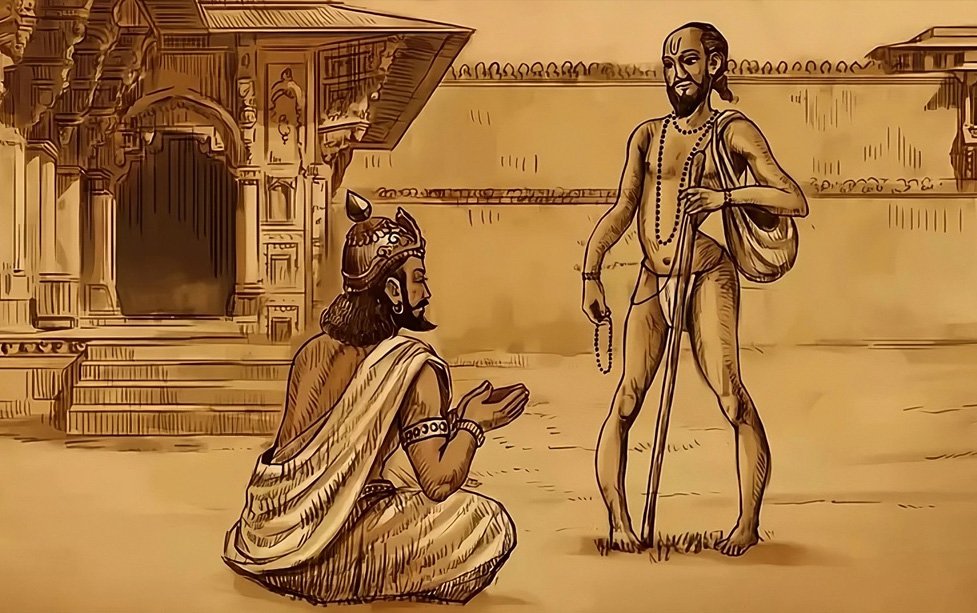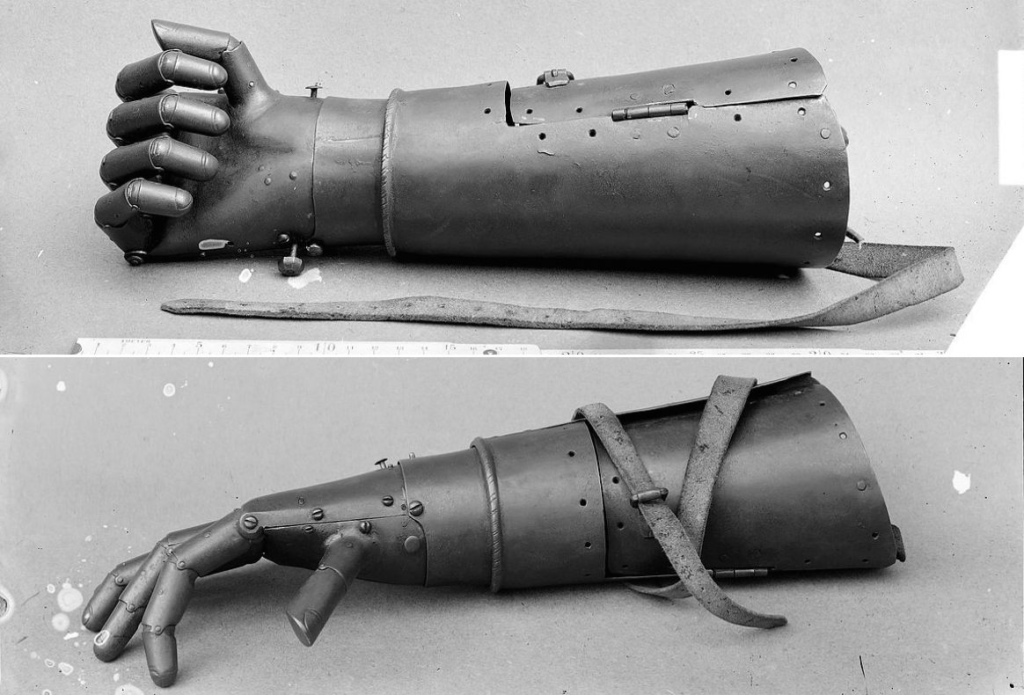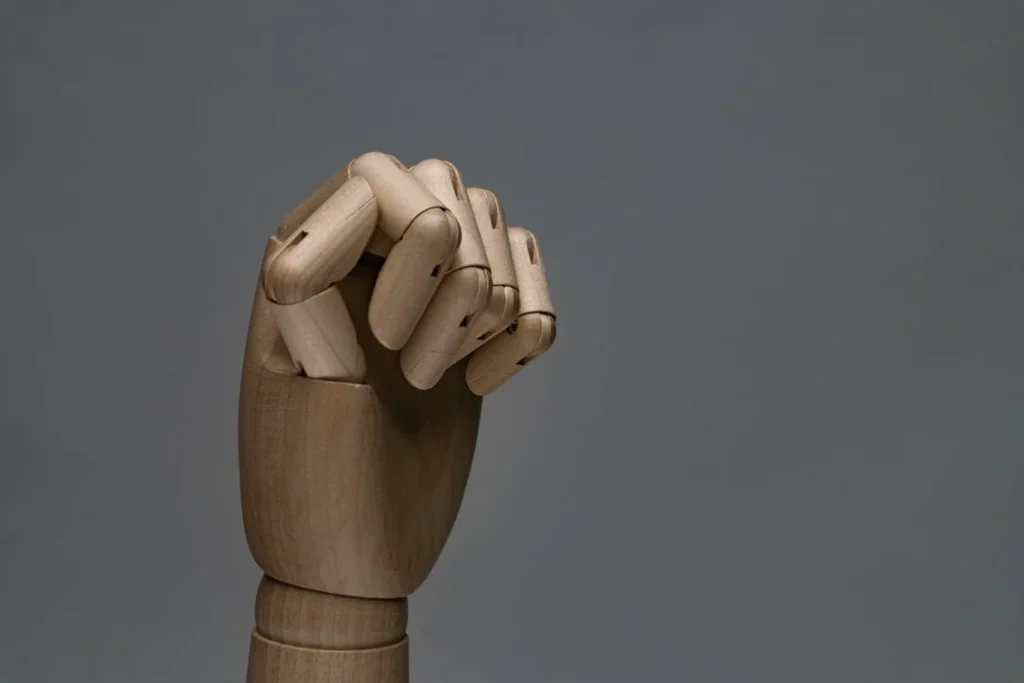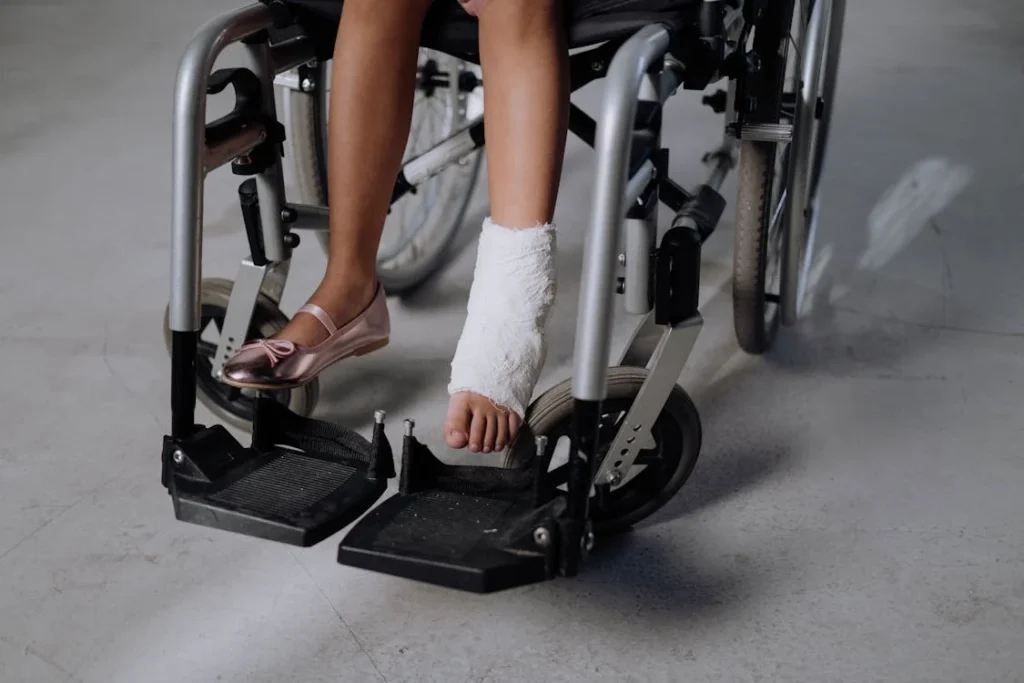Throughout history, disability and prosthetic limbs have been woven into myths, folklore, and historical accounts. Many cultures have depicted individuals with missing limbs as either powerful warriors, divine figures, or symbols of resilience. At the same time, ancient civilizations developed innovative prosthetics long before modern technology made them common.
The stories people told in the past shaped how disability was perceived in their societies. Some cultures saw it as a mark of divine favor, while others associated it with struggle and redemption. Prosthetic limbs, too, have a long and fascinating history, with early designs crafted from wood, metal, and leather to help individuals regain their mobility.
By exploring these myths, legends, and historical advancements, we can understand how disability and prosthetics have been viewed over time. These stories help us see that prosthetics are not just modern inventions but part of a long tradition of human ingenuity and perseverance.

Disability in Mythology and Folklore
The way ancient societies viewed disability was often reflected in their myths and legends. Some cultures saw individuals with disabilities as cursed or punished by the gods, while others revered them as wise, chosen, or even supernatural.
Many myths also featured characters with lost limbs who adapted, found strength, or even gained magical abilities.
The One-Legged Gods and Spirits
In many cultures, gods and mythical beings with missing limbs played significant roles in folklore. In Hindu mythology, one of the most well-known figures with a physical impairment is King Ashtavakra.
Born with eight deformities, Ashtavakra was a wise sage and scholar, proving that physical appearance did not define intelligence or spiritual strength. His story challenges the idea that disability is a limitation and instead presents it as part of a greater destiny.
Norse mythology also features the one-legged smith-god Weyland (or Volundr), a legendary craftsman who was enslaved and had his leg cut off.
Despite this, he forged powerful weapons and armor, eventually escaping captivity and taking revenge on those who wronged him. His story reflects the resilience of individuals who adapt and continue to master their skills despite physical loss.
In African folklore, the concept of the “one-legged spirit” appears in many tales. In some traditions, these spirits are tricksters, using their condition to deceive or outsmart others.
In other stories, they are wise figures who help heroes on their journeys. These myths often suggest that losing a limb does not make someone weak—if anything, it gives them a unique perspective and strength.
Warriors Who Lost Limbs and Became Legends
One of the most common themes in folklore is the warrior who suffers a devastating injury but continues to fight. Ancient stories often depict these figures as unstoppable, using their disability as motivation rather than a setback.
One of the earliest examples is found in Irish mythology with Nuada, the first king of the Tuatha Dé Danann. Nuada lost his arm in battle and was forced to give up his throne because a leader was required to be physically whole.
However, a silver arm was crafted for him by the god of healing, restoring his ability to fight. His story is one of the earliest depictions of a prosthetic limb, symbolizing the idea that technology can restore a person’s role in society.
A similar tale appears in Japanese history with Date Masamune, a legendary samurai and warlord who lost an eye as a child. Despite this, he became one of the most feared and respected warriors of his time, earning the nickname “the One-Eyed Dragon.”
His story, like many others, challenges the idea that disability equates to weakness.
These legends show that people with disabilities were not always seen as helpless or incapable. Many societies honored them for their strength, intelligence, or resilience, and their stories continue to inspire today.

Prosthetics in Ancient Civilizations
While myths and folklore often gave supernatural explanations for lost limbs, real-world history shows that early civilizations were remarkably innovative in developing prosthetics.
From ancient Egypt to medieval Europe, different cultures found ways to restore function and mobility for individuals with missing limbs.
These early prosthetics were not just about appearance—they were designed to help people regain independence, proving that the need for assistive technology has always been a part of human history.
The First Known Prosthetic Limbs
One of the oldest recorded prosthetics comes from ancient Egypt. A well-preserved wooden and leather toe, dating back to around 950 BCE, was discovered on the foot of an Egyptian noblewoman.
Unlike many early prosthetics, this device was not just for appearance—it showed signs of wear, indicating that it was used for walking. This suggests that even in ancient times, people understood the importance of both function and aesthetics in prosthetic design.
The Romans also created prosthetics for soldiers who lost limbs in battle. Historical records mention a Roman general named Marcus Sergius, who lost his right hand in combat but was fitted with an iron replacement that allowed him to hold his shield and continue fighting.
His story, much like modern examples of veterans using prosthetic limbs, reflects a long history of adapting to injuries and overcoming challenges.
In China, historical texts describe the use of wooden prosthetic limbs as early as the 3rd century BCE. These early devices were simple but effective, helping individuals regain mobility.
Similarly, in India, ancient medical texts like the Sushruta Samhita mention methods for treating amputations and fitting artificial limbs, demonstrating advanced medical knowledge for the time.
Medieval and Renaissance Innovations
By the Middle Ages, prosthetics had become more sophisticated, especially for knights and warriors who needed to continue fighting. Metal prosthetic arms were crafted for soldiers, sometimes designed to hold weapons or shields.
Some even had intricate locking mechanisms that allowed the wearer to grip objects, a feature that mirrors modern bionic prosthetics.
One of the most famous examples from this period is the prosthetic arm of Götz von Berlichingen, a German knight from the 16th century.
After losing his right hand in battle, he was fitted with a mechanical iron hand that had moving fingers, allowing him to continue wielding a sword. His story became legendary, proving that determination and innovation could restore a warrior’s ability to fight.
During the Renaissance, advancements in medicine and engineering led to more refined prosthetic designs. Materials such as leather, iron, and wood were used to create limbs that were both durable and functional.
These developments laid the foundation for modern prosthetics, showing that humanity has always sought ways to improve mobility and independence for those with limb loss.
The Cultural Significance of Prosthetics
In many ancient cultures, prosthetic limbs were not just medical devices—they held deep cultural significance. They were often seen as symbols of strength, resilience, and adaptation.
Warriors who wore prosthetics were sometimes even revered, as their ability to continue fighting despite their injuries made them legends in their time.
Even beyond the battlefield, prosthetics carried meaning. In societies where physical wholeness was linked to leadership or divine favor, losing a limb could mean losing status.
However, the development of prosthetics helped challenge these ideas by proving that individuals with limb loss could still lead, work, and participate fully in society.

Symbolism of Prosthetics in Different Cultures
Throughout history, prosthetics have carried deeper meanings beyond their practical use. In many cultures, they were symbols of resilience, transformation, and even supernatural power.
While modern prosthetics focus on restoring function, in ancient times, they often took on symbolic significance, influencing how societies viewed individuals with limb loss.
Prosthetics as Symbols of Strength and Honor
In warrior cultures, losing a limb in battle was often seen as a sign of bravery rather than weakness. When a soldier returned from war with an artificial limb, it became a mark of their endurance and survival. Some cultures even created prosthetic limbs that reflected this warrior identity.
In Japan, samurai warriors who lost limbs were sometimes fitted with beautifully crafted wooden or metal prosthetics that allowed them to continue serving their clans.
These prosthetics were not just practical but also ceremonial, representing the unbreakable spirit of the warrior. Similarly, in European history, knights who lost limbs in battle were often given mechanical prosthetics that reinforced their status as fearless fighters.
Even outside of the battlefield, some ancient rulers and noble figures wore prosthetics as symbols of their resilience. These artificial limbs were often decorated with intricate carvings or precious metals, signifying wealth and power rather than disability.
In these cases, prosthetics were not seen as replacements for lost body parts but as enhancements that added to the wearer’s prestige.
Spiritual and Supernatural Associations
In some traditional societies, artificial limbs carried spiritual significance. They were sometimes linked to beliefs about rebirth, divine intervention, or supernatural transformation.
In certain African and Native American traditions, for example, prosthetic limbs were thought to be imbued with protective or mystical properties, ensuring that the wearer could continue their journey in both the physical and spiritual world.
In Hindu mythology, prosthetic-like restorations appear in the form of divine interventions. Stories tell of gods restoring limbs to warriors and devotees who had lost them, reinforcing the idea that limb loss was not permanent but could be reversed or adapted to through divine will.
This belief contributed to the idea that individuals with artificial limbs were still whole, even if their bodies had changed.
Ancient Egyptian culture also had connections between artificial body parts and the afterlife. Some mummies were found with wooden toes or fingers, suggesting that Egyptians believed the body needed to be restored for the afterlife.
Whether these prosthetics were used in daily life or only for burial, they reveal a belief that artificial limbs held meaning beyond their functional use.
Prosthetics as a Reflection of Societal Attitudes
The way different cultures viewed prosthetics often reflected their broader attitudes toward disability. In societies where physical perfection was highly valued, prosthetic limbs were sometimes hidden or downplayed.
However, in cultures that valued resilience and adaptability, prosthetics were worn with pride.
As modern societies move toward greater inclusivity, the lessons from history remain relevant. The way people with prosthetics are perceived today—whether as individuals with limitations or as empowered individuals—continues to be shaped by cultural narratives.
By understanding the historical symbolism of prosthetics, we can appreciate how far we have come and how attitudes toward disability and assistive technology continue to evolve.

The Evolution of Prosthetic Design: From Ancient Ingenuity to Modern Innovation
While the symbolic and cultural significance of prosthetics has evolved over centuries, the actual design and functionality of artificial limbs have also undergone dramatic transformations.
Ancient civilizations crafted prosthetics using the materials available to them—wood, leather, metal—creating devices that, while rudimentary, still served a purpose.
Today, advances in engineering, medicine, and robotics have taken prosthetic technology to a level once thought impossible.
The Transition from Function to Comfort
Early prosthetic limbs were designed primarily for function, with little consideration for comfort. Many were stiff, heavy, and difficult to wear for extended periods. However, even these early designs proved that humans have always sought solutions to physical limitations.
The transition from purely functional prosthetics to more comfortable and personalized designs began during the Renaissance. With the growth of medical knowledge, craftsmen started to design prosthetics that mimicked natural movement more effectively.
Hinges, straps, and springs were added to give users greater mobility. These innovations, though still basic by today’s standards, set the foundation for the prosthetic advancements that followed.
In modern times, comfort has become just as important as functionality. Lightweight materials such as carbon fiber and silicone make prosthetics easier to wear, while custom-molded sockets ensure a better fit.
Unlike their ancient counterparts, today’s prosthetic users do not have to sacrifice comfort for usability.
The Rise of Bionic and Smart Prosthetics
One of the biggest revolutions in prosthetic technology has been the rise of bionic limbs. Unlike traditional mechanical prosthetics, bionic limbs use sensors, microprocessors, and artificial intelligence to respond to a user’s movements in real time.
These advanced prosthetics can grip, flex, and even detect muscle signals, allowing for near-natural movement.
Modern bionic prosthetics, such as Grippy™ by Robobionics, take this innovation further by incorporating smart technology that adapts to the user’s specific needs.
Unlike the rigid artificial limbs of the past, these prosthetics allow for fluid and precise movement, enabling users to perform everyday tasks with greater ease.
Additionally, 3D printing has opened up new possibilities for creating customized prosthetics at a fraction of the cost of traditional models.
In many developing countries, where access to high-quality prosthetics has historically been limited, 3D-printed limbs are providing an affordable and effective solution.
This democratization of prosthetic technology is helping more people regain independence, regardless of their economic background.
Cultural Shifts: Prosthetics as a Form of Self-Expression
In the past, prosthetics were designed to blend in—to make the wearer look as “normal” as possible. But today, many prosthetic users are embracing them as a form of self-expression rather than concealment.
Modern prosthetics come in a variety of styles, colors, and designs, allowing users to showcase their individuality.
Athletes and public figures with prosthetic limbs have helped normalize this shift. Instead of hiding their prosthetics, they display them proudly, proving that limb loss does not mean the loss of identity or confidence.
This cultural shift challenges outdated notions of disability and encourages greater acceptance of prosthetic users in everyday life.
The Future of Prosthetic Technology
Looking ahead, prosthetic technology is set to become even more advanced. Scientists are working on prosthetics that can restore the sense of touch, powered by neural interfaces that connect directly to the brain.
Others are exploring bioengineered limbs that could regenerate lost tissue. These advancements may soon make prosthetic limbs feel and function just like natural ones.
While ancient societies viewed prosthetics as a symbol of survival, today they represent something even greater—the limitless potential of human ingenuity.
At Robobionics, we are proud to be part of this journey, helping people regain mobility and confidence through innovative prosthetic solutions.

How History Shapes Modern Perceptions of Disability and Prosthetics
The stories of ancient warriors, legendary figures, and historical prosthetic users have left a lasting impact on how modern societies view disability and assistive technology.
While past civilizations often saw limb loss as either a mark of divine will or personal resilience, today’s world is still influenced by these narratives. Understanding this historical context helps us recognize both the progress that has been made and the challenges that remain.
From Isolation to Inclusion
In many ancient cultures, disability often led to exclusion. Whether due to religious beliefs, superstitions, or practical limitations, individuals with missing limbs were sometimes seen as incapable of participating in society.
While some were honored as warriors or wise figures, others faced discrimination, particularly in rigid social structures where physical wholeness was linked to status and power.
Over time, medical advancements and shifting attitudes have transformed how society approaches disability. The rise of inclusive policies, disability rights movements, and assistive technology has helped people with prosthetics gain greater independence and opportunities.
However, remnants of old prejudices still linger in some traditional societies, where disability is seen as a weakness rather than a different way of living.
The Lingering Influence of Myths and Folklore
Even today, myths and folklore continue to shape cultural attitudes toward disability. Many societies still hold on to symbolic views of prosthetic users—either as figures of inspiration or as people who have “overcome” something extraordinary.
While these narratives can be empowering, they can also unintentionally reinforce the idea that disability is an obstacle to be conquered rather than a normal part of human diversity.
The portrayal of prosthetic users in modern media reflects this historical legacy. In movies, literature, and television, characters with prosthetic limbs are often depicted as either heroic survivors or tragic figures.
While these representations have improved in recent years, they still highlight the need for more realistic and diverse portrayals of individuals who use prosthetics in everyday life.
Breaking Barriers Through Innovation and Awareness
The biggest shift in modern times has been the growing recognition that prosthetics are not just about replacing lost limbs—they are about enhancing lives.
Unlike the early days when prosthetics were viewed as crude mechanical aids, today’s designs focus on integration, personalization, and functionality. The goal is not just to restore movement but to provide users with greater confidence, independence, and opportunities.
At Robobionics, we believe that history should inform progress. By understanding the challenges faced by prosthetic users in the past, we can work toward a future where prosthetic technology is fully accepted and accessible to all.
Through education, awareness, and continuous innovation, we can help dismantle outdated perceptions and create a world where prosthetic users are recognized not for their limitations, but for their limitless potential.

The Psychological and Emotional Impact of Prosthetics Through History
While the physical aspects of prosthetic development have been well-documented, the emotional and psychological journey of prosthetic users throughout history is often overlooked. Losing a limb is not just a physical transformation—it is a deeply personal experience that affects identity, self-esteem, and social interactions.
The way societies have viewed and treated prosthetic users has played a significant role in shaping their mental well-being across different time periods.
The Emotional Toll of Limb Loss in Ancient Societies
In early civilizations, losing a limb could be life-altering in more ways than one. Without the support systems available today, individuals who suffered amputations often had to navigate not just their physical recovery, but also social stigma and personal grief.
Many ancient texts reference warriors or laborers who were injured in battle or accidents, some of whom struggled with reintegration into their communities.
For some, prosthetic limbs provided a path to reclaiming their identity. A warrior who lost an arm or a leg in battle but was later fitted with a prosthetic could return to a life of duty, avoiding social exclusion.
However, for those outside of privileged classes—such as farmers, artisans, or merchants—losing a limb could mean losing their livelihood, leading to emotional distress and marginalization.
The Psychological Role of Prosthetics in Restoring Identity
Throughout history, prosthetic limbs have served not just as functional tools, but also as psychological aids that helped individuals feel whole again.
Ancient warriors with mechanical arms or legs were often seen as symbols of endurance, reinforcing the idea that they were still strong and capable.
In some cases, prosthetics were crafted to be visually impressive, featuring elaborate engravings or designs that enhanced the wearer’s status rather than diminishing it.
In Renaissance Europe, where appearance played a significant role in societal acceptance, prosthetics were sometimes designed to be hidden beneath clothing to avoid drawing attention.
This reflects the psychological pressure many prosthetic users faced—to appear as “normal” as possible rather than embracing their new reality.
Modern prosthetic users continue to face similar emotional journeys. While advancements in technology have made prosthetic limbs more functional and comfortable, the process of adapting to them remains deeply personal.
The way society treats prosthetic users—whether with curiosity, admiration, or discrimination—can significantly impact their self-esteem and mental health.
Coping Mechanisms and Social Reintegration
Historically, individuals who received prosthetic limbs often had to develop their own coping mechanisms to adjust to their new reality. Some relied on storytelling, framing their prosthetic use as part of a heroic or spiritual journey.
Others sought support from close-knit communities that accepted them regardless of physical differences.
In the modern world, peer support groups, counseling, and rehabilitation programs play an essential role in helping prosthetic users navigate their emotions.
Unlike in ancient times, where prosthetic users had limited options for emotional support, today’s prosthetic wearers have access to networks of individuals who share similar experiences, allowing for better mental and emotional adaptation.
At Robobionics, we understand that prosthetics are more than just physical tools—they are deeply connected to personal identity and emotional well-being.
That’s why we focus on creating solutions that not only restore movement but also help individuals regain confidence and a sense of normalcy in their daily lives.
Conclusion
The history of disability and prosthetics is a testament to human resilience, ingenuity, and the deep connection between physical ability and identity. From ancient warriors with metal limbs to divine figures in mythology, prosthetic users have long been woven into cultural narratives—sometimes as symbols of strength, sometimes as outcasts, but always as part of humanity’s ongoing story.
While early prosthetics were rudimentary, they laid the foundation for today’s advanced bionic limbs that restore mobility and independence. Just as myths and historical figures shaped perceptions of disability in the past, modern innovations are redefining what it means to live with a prosthetic. Today, prosthetics are not just seen as replacements for lost limbs—they are powerful tools for reclaiming one’s life.
At Robobionics, we believe in carrying forward this legacy of innovation. By making high-quality prosthetics accessible and fostering a world where disability is no longer a barrier, we honor the resilience of those who came before while paving the way for future generations. The journey of prosthetics is far from over, and with each advancement, we come closer to a world where everyone has the opportunity to thrive.



